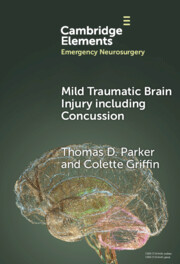Element contents
Mild Traumatic Brain Injury including Concussion
Published online by Cambridge University Press: 14 December 2023
Summary
- Type
- Element
- Information
- Online ISBN: 9781009380089Publisher: Cambridge University PressPrint publication: 18 January 2024
References
- 3
- Cited by



